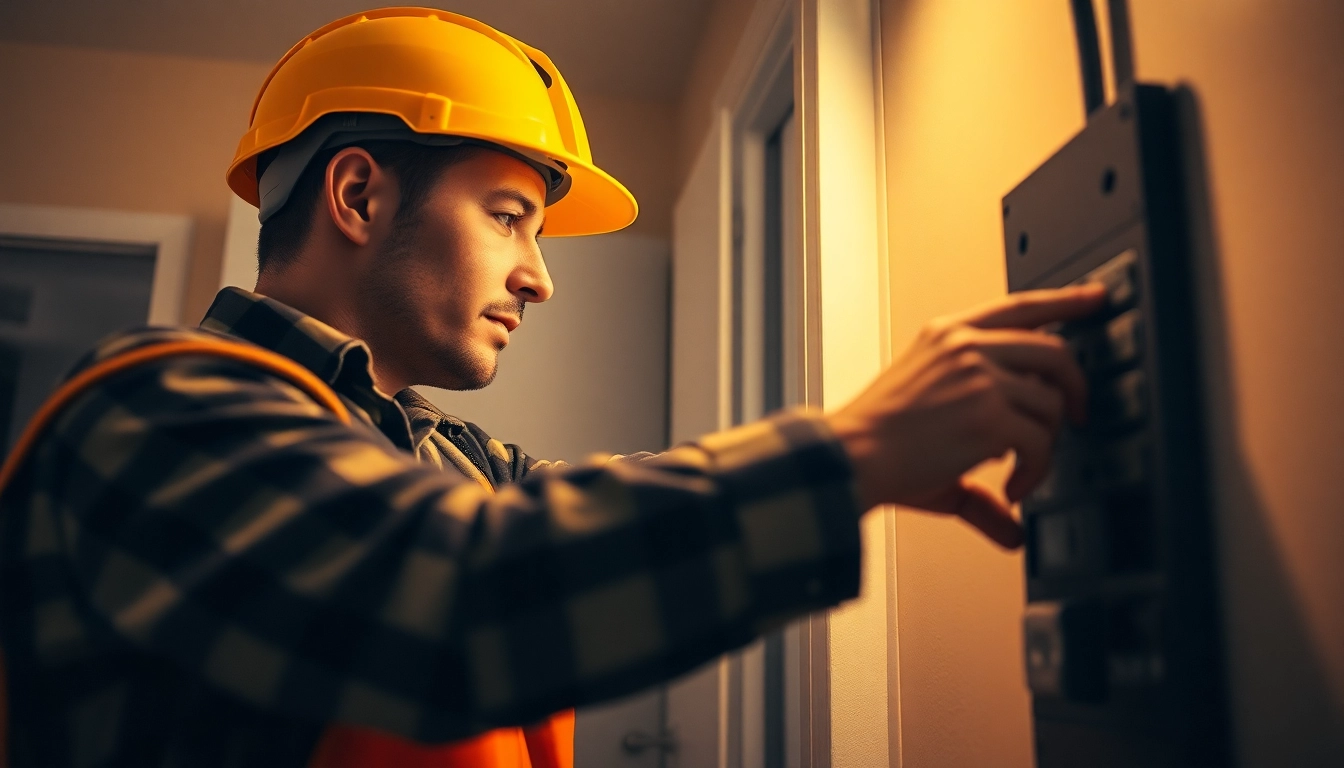Understanding Data Cable Installation Services
What is Data Cable Installation?
Data cable installation refers to the process of setting up wired connections that facilitate communication between electronic devices. This involves laying cables, connecting plugs, and ensuring that the infrastructure supports data transmission for various applications, including internet access, phone systems, and internal networks. In both residential and commercial settings, professional Data Cable Installation service ensures that all components work efficiently, minimizing the potential for interruptions or issues.
Importance of Professional Services
When it comes to data cabling, professional installation services are crucial. Professional installers bring expertise and experience to the table, ensuring that cables are installed according to relevant industry standards and safety regulations. Misconfiguration or improper installation can lead to inadequate data speeds, increased latency, and potential hazards. Moreover, skilled technicians can conduct thorough evaluations of your current infrastructure, identifying any underlying issues that could affect performance.
Types of Data Cables Used
The choice of data cables is vast, with various types designed for specific applications. Some of the most common types include:
- Category 5e (Cat 5e): Typically used for Ethernet connections, supporting data rates up to 1 Gbps.
- Category 6 (Cat 6): Offers improved performance with data rates up to 10 Gbps over short distances, ideal for high-speed networks.
- Category 6a (Cat 6a): Enhanced variant of Cat 6, supporting longer distances while maintaining 10 Gbps speeds.
- Fiber Optic Cables: Utilize light to transmit data, providing much higher speeds and bandwidth over long distances without electromagnetic interference.
- Coaxial Cables: Often used for broadband internet and cable television, though less common in data networking.
The Benefits of Professional Data Cable Installation
Increased Network Performance
A well-installed data cabling system significantly increases network performance. By using high-quality cables and adhering to best installation practices, businesses and homeowners can achieve faster speeds and greater reliability. This is particularly important in today’s data-driven world, where downtime can result in lost productivity and revenue. A proper data infrastructure supports consistent performance, allowing users to communicate and access information without interruptions.
Compliance with Industry Standards
Adhering to industry standards and regulations is not just a matter of best practices; it’s often a legal requirement. Professional installation services understand and implement the guidelines set by organizations such as the Telecommunications Industry Association (TIA) and the Institute of Electrical and Electronics Engineers (IEEE). Compliance ensures safety, optimizes performance, and can be essential for fulfilling insurance and liability requirements.
Cost-Effectiveness and Longevity
Investing in professional installation might come at a higher initial cost compared to a DIY approach, but the long-term benefits far outweigh these expenses. With professionally installed data cabling, users can expect fewer issues and a longer lifespan for their systems. Moreover, proper installation minimizes future maintenance costs and expands the potential for upgrades without a complete system overhaul.
How to Choose the Right Data Cable Installation Service
Assessing Qualifications and Experience
When selecting a data cable installation service, it’s essential to evaluate the qualifications and experience of the technicians. Look for certifications such as Registered Communication Distribution Designer (RCDD) or certifications from cable manufacturers. Experienced professionals will be familiar with various installation techniques and troubleshooting approaches relevant to your specific needs.
Understanding Pricing and Estimates
Pricing can vary significantly based on the scope and complexity of the installation. It’s advisable to obtain estimates from multiple providers. Ensure that quotes include all potential costs—such as materials, labor, and any additional charges for unforeseen challenges. Understanding the breakdown of costs will help you make an informed decision without compromising on quality.
Reading Customer Reviews and Testimonials
Customer reviews and testimonials provide valuable insights into the reliability and service quality of an installation company. Check online platforms, such as Google reviews or industry-specific forums, to gauge customer satisfaction. Positive feedback concerning punctuality, professionalism, and overall service is a good indicator of a reputable provider.
Installation Process Explained
Initial Consultation and Site Assessment
The installation process begins with an initial consultation where service providers assess the specific needs of the client. During a site visit, they will evaluate the existing infrastructure, identify possible challenges, and determine appropriate cabling pathways. This step is critical for planning an efficient installation that meets all client requirements.
Installation Steps and Best Practices
Once the planning phase is complete, here are the key steps typically involved in the installation process:
- Preparation: Gathering materials and tools, ensuring that the workspace is clear and accessible.
- Cable Routing: Establishing pathways for cable installation—this could involve drilling walls, running cabling through ceilings, or utilizing existing conduits.
- Pulling Cables: Carefully pulling the cables along the planned routes, ensuring no damage occurs during the process.
- Termination: Connecting cables to their respective jacks and ensuring proper electrical and mechanical terminations.
- Testing: Conducting a series of tests to ensure optimal performance, checking for errors, speed, and connectivity.
- Documentation: Providing clients with schematics and documentation of the installation, which is essential for any future upgrades or troubleshooting.
Post-Installation Support and Maintenance
After installation, many providers offer ongoing support and maintenance services. This includes regular checks to ensure everything runs smoothly and troubleshooting support to resolve any issues that might arise. Establishing a good relationship with the service provider can lead to faster resolutions if problems occur and can provide peace of mind knowing your system is being monitored.
Common Challenges in Data Cable Installation
Addressing Site Limitations
Every installation site comes with its own unique challenges—whether it be architectural constraints, existing infrastructure, or the environment (like extreme temperatures or interference). Skilled technicians know how to navigate these challenges effectively. Conducting a comprehensive assessment during the initial phase can mitigate many of these issues before installation begins.
Dealing with Existing Infrastructure
Often, homes and offices have existing wiring or structures that can complicate the installation of new cables. A professional installation team will be well-versed in integrating new systems with existing ones. They will take care to ensure compatibility while upgrading the overall infrastructure.
Tech Support and Troubleshooting
Even after a successful installation, there may be times when issues arise. Having a reliable tech support team available can make all the difference. Professional providers usually offer one-year warranties on installations and sometimes even longer on specific components. They can assist with real-time troubleshooting, making it easier to diagnose and resolve any issues quickly.



